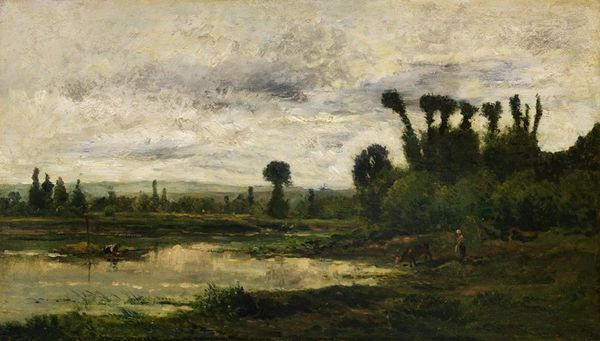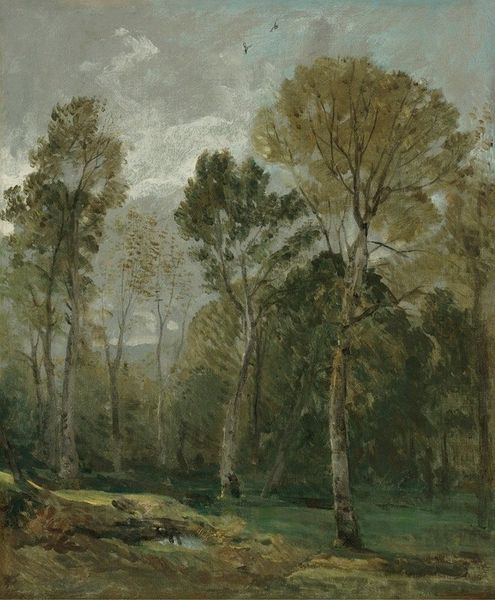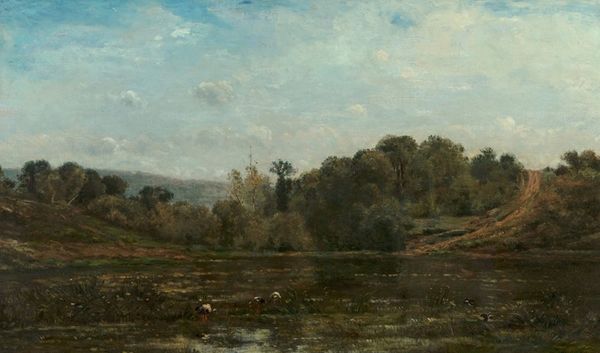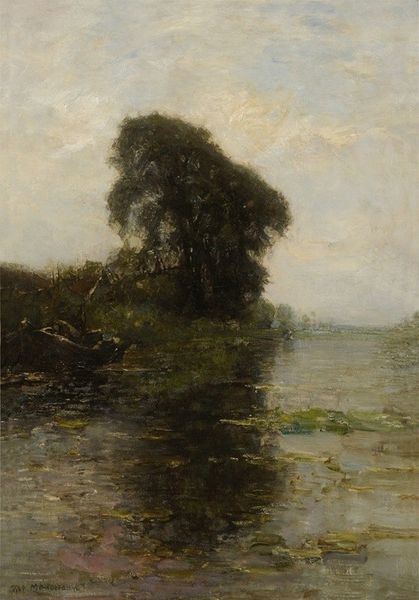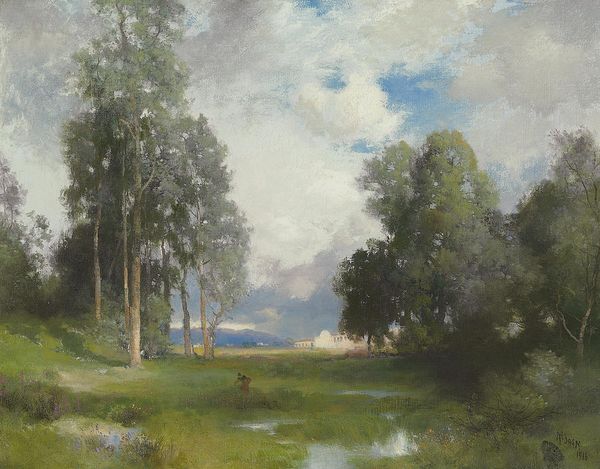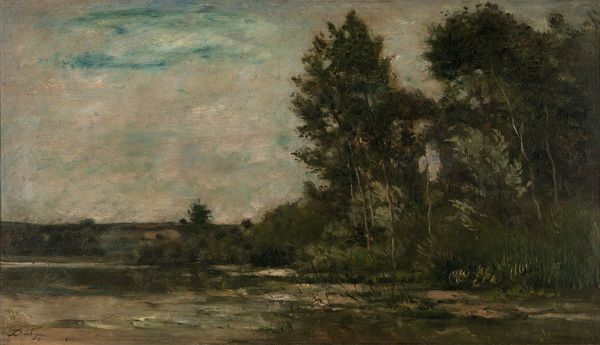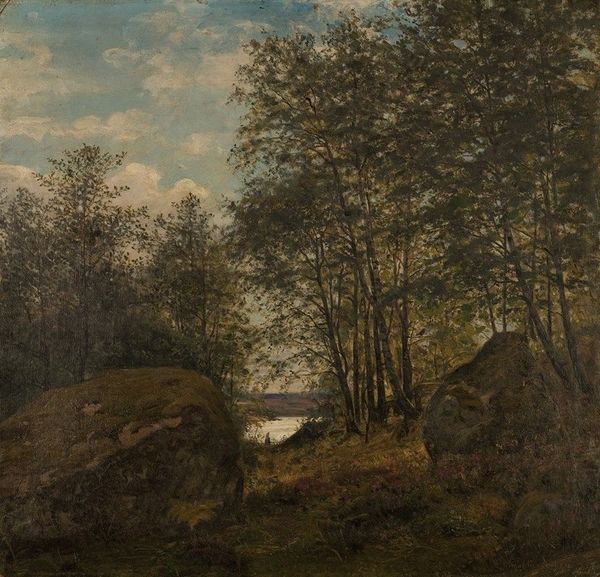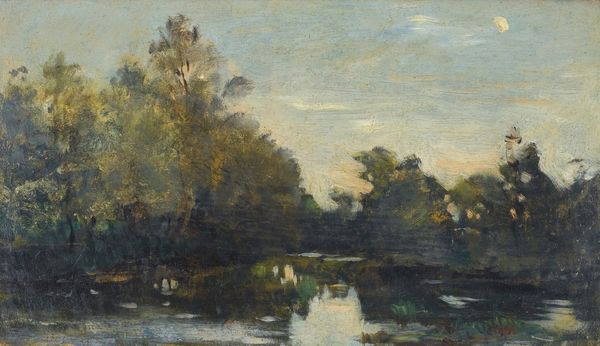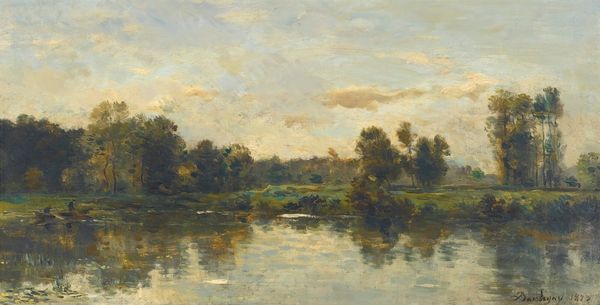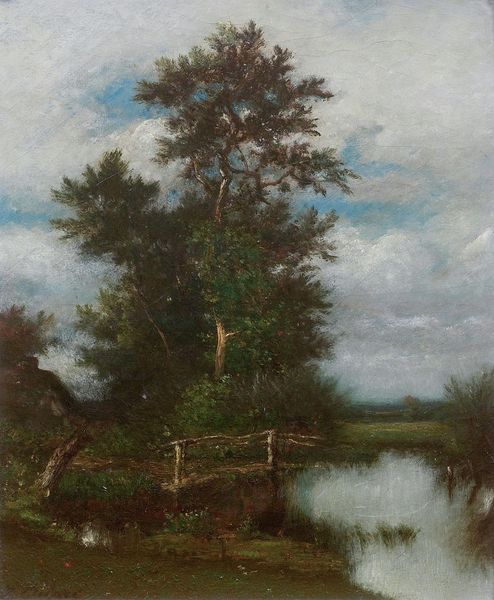
painting, plein-air, oil-paint
#
painting
#
impressionism
#
plein-air
#
oil-paint
#
landscape
#
impressionist landscape
#
figuration
#
oil painting
#
romanticism
Copyright: Public Domain: Artvee
Curator: Standing before us, we have “Le Torrent Pierreux” an oil painting by Camille Corot. Editor: The atmosphere hits me first. It feels still, almost meditative, despite the torrent—a powerful current rendered soft and muted. Curator: Indeed. Corot, active primarily in 19th-century France, demonstrates the techniques associated with both the Romantic and emerging Impressionist styles. Note how his brushstrokes, especially in the trees, create texture. The light filters down as the painting guides the viewer along the river toward the obscured vista. Corot was notable for working "en plein-air" capturing fleeting impressions and using loose brushwork. Editor: His technique invites you into that scene, that space. Look how that lone figure crossing the rocks feels both integrated and a little displaced in nature. This raises interesting questions about how we relate to land – especially how access and the benefits derived are distributed along gender and other identity lines. Did everyone have the leisure, means and opportunity to experience nature in this period? Curator: That's a crucial perspective. While Corot focused on depicting natural beauty, his art was exhibited during a period of vast societal change. His works, displayed in the Salon, a state-sponsored art exhibition, would have catered to a certain social class. Editor: It’s tempting to see just the picturesque here. But placing art like this in a larger framework makes it vital and current, forcing us to confront what it excludes as well as what it celebrates. Who and what is rendered invisible? How did prevailing cultural ideologies affect art production and consumption at that time, and does that effect continue today? Curator: Your points are important and illustrate how critical perspectives enhance our appreciation, while addressing art's place within the context of evolving socio-political realities. I invite all listening to ponder these vital questions, as your appreciation deepens for the artwork on display and as the world continues to change all around us. Editor: Indeed. There are no simple escapes—but that’s where meaningful engagement starts. I urge people to think critically not only about the landscape as depicted in Corot’s art but also to assess the narratives presented, how these are shaped by social issues of the past and how such portrayals of beauty impact the present moment.
Comments
No comments
Be the first to comment and join the conversation on the ultimate creative platform.

